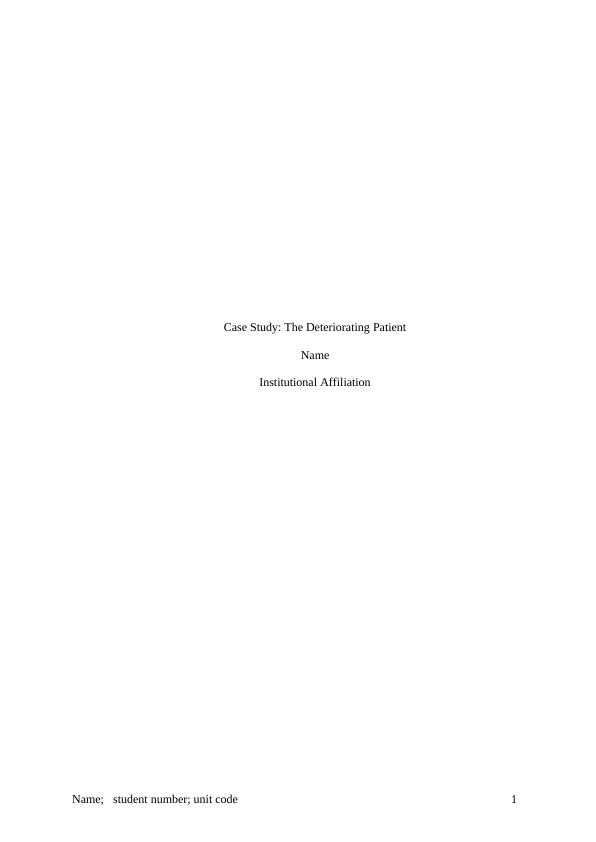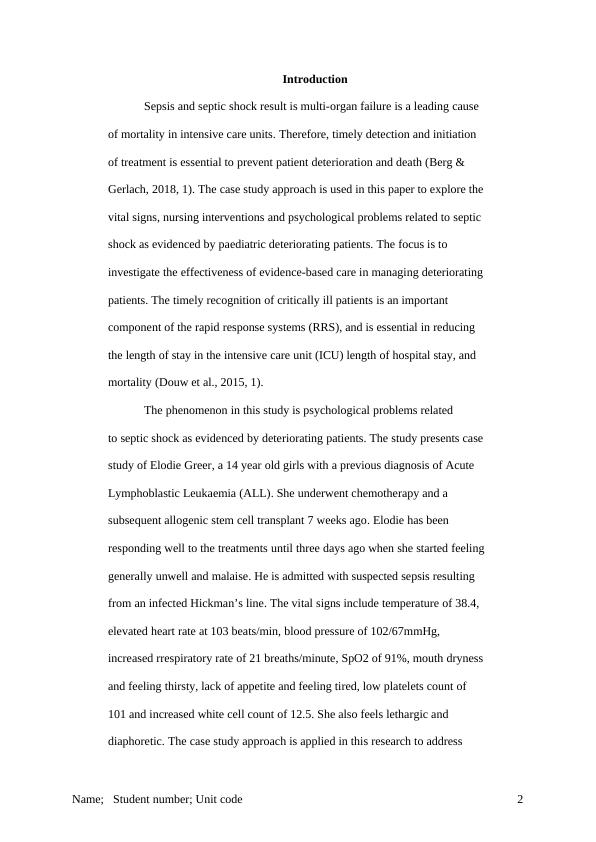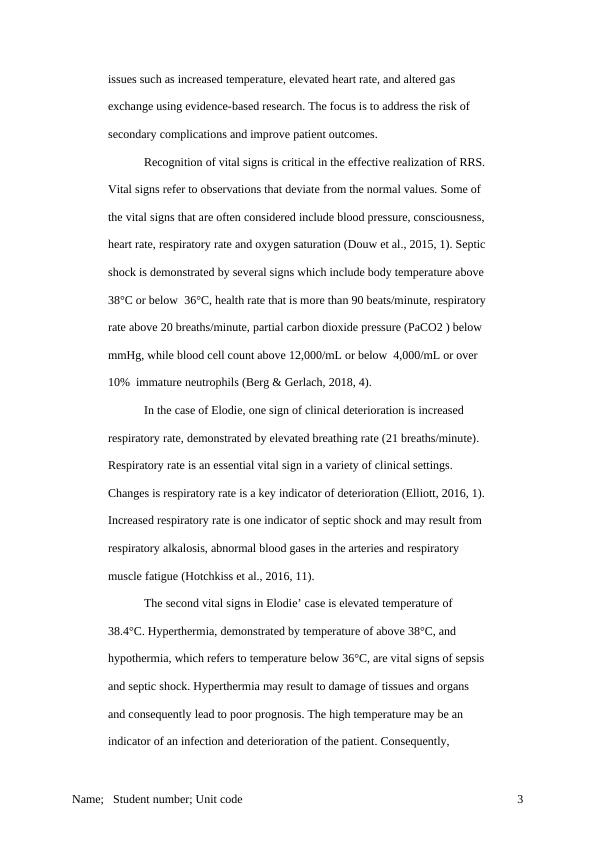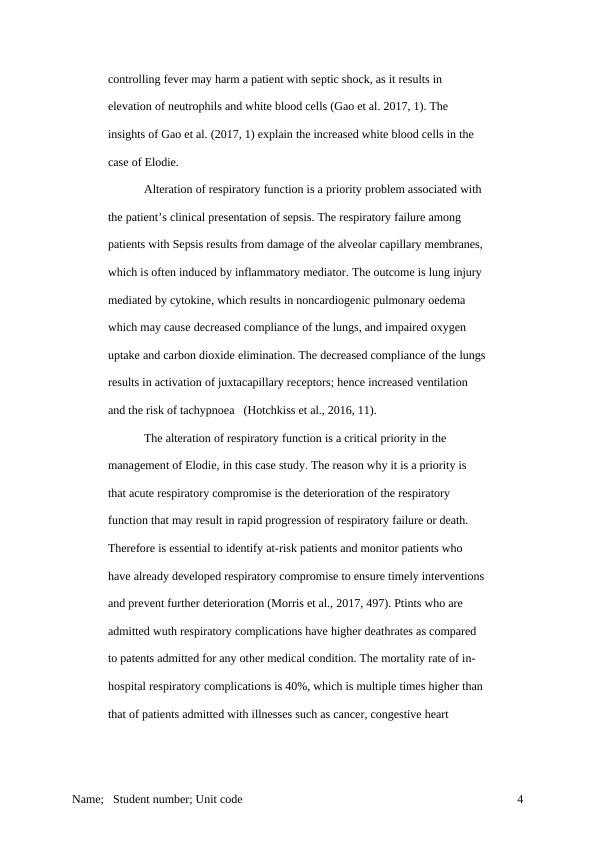Case Study: The Deteriorating Patient
For this essay, students are required to select a case scenario related to the clinical deterioration of a patient and discuss signs or symptoms of clinical deterioration, identify a priority problem, discuss nursing interventions, and identify a psychosocial issue.
12 Pages3197 Words1 Views
Added on 2022-12-18
About This Document
This case study explores the vital signs, nursing interventions, and psychological problems related to septic shock in deteriorating patients. It focuses on the effectiveness of evidence-based care in managing deteriorating patients and the importance of timely recognition of critically ill patients.
Case Study: The Deteriorating Patient
For this essay, students are required to select a case scenario related to the clinical deterioration of a patient and discuss signs or symptoms of clinical deterioration, identify a priority problem, discuss nursing interventions, and identify a psychosocial issue.
Added on 2022-12-18
ShareRelated Documents
End of preview
Want to access all the pages? Upload your documents or become a member.
Pediatric Septic Shock Introduction
|11
|3111
|267
Case Study of Elodie, a Patient with Acute Lymoblastic Leukaemia
|11
|3399
|395
Sepsis Infection in Minors: Case Study and Nursing Interventions
|11
|3188
|28
Pediatric Acute Lymphoblastic Leukemia Questions and Answers 2022
|7
|1878
|14
Septic Shock Management
|12
|2815
|120
Assignment on Septic Shock PDF
|9
|2601
|36




